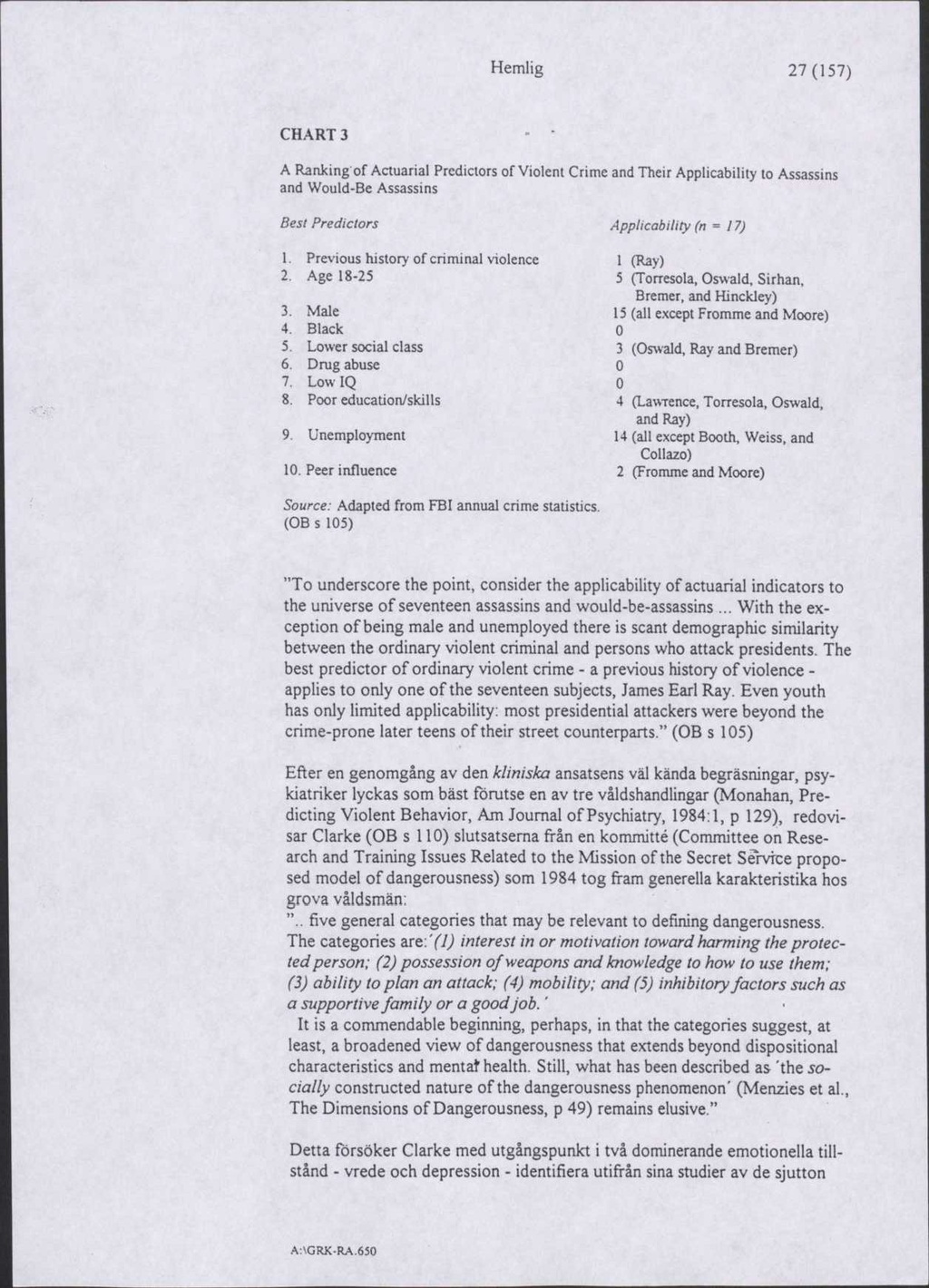CHART 3
A Ranking of Actuarial Predictors of Violent Crime and Their Applicability to Assassins and Would-Be Assassins
Best Predictors
Applicability (n = 17)
1. Previous history of criminal violence 2. Age 18-25
3. Male 4. Black 5. Lower social class 6. Drug abuse 7. Low IQ 8. Poor education/skills
1 (Ray) 5 (Torresola, Oswald, Sirhan,
Bremer, and Hinckley) 15 (all except Fromme and Moore) 0 3 (Oswald, Ray and Bremer) 0 0 4 (Lawrence, Torresola, Oswald,
and Ray) 14 (all except Booth, Weiss, and
Collazo) 2 (Fromme and Moore)
9. Unemployment
10. Peer influence
Source: Adapted from FBI annual crime statistics. (OB s 105)
"To underscore the point, consider the applicability of actuarial indicators to the universe of seventeen assassins and would-be-assassins ... With the exception of being male and unemployed there is scant demographic similarity between the ordinary violent criminal and persons who attack presidents. The best predictor of ordinary violent crime - a previous history of violence - applies to only one of the seventeen subjects, James Earl Ray. Even youth has only limited applicability: most presidential attackers were beyond the crime-prone later teens of their street counterparts." (OB s 105) Efter en genomgång av den kliniska ansatsens väl kända begräsningar, psykiatriker lyckas som bäst förutse en av tre våldshandlingar (Monahan, Predicting Violent Behavior, Am Journal of Psychiatry, 1984:1, p 129), redovisar Clarke (OB s 110) slutsatserna från en kommitté (Committee on Research and Training Issues Related to the Mission of the Secret Service proposed model of dangerousness) som 1984 tog fram generella karakteristika hos grova våldsmän: ".. five general categories that may be relevant to defining dangerousness. The categories are:' (1) interest in or motivation toward harming the protected person; (2) possession of weapons and knowledge to how to use them; (3) ability to plan an attack; (4) mobility; and (5) inhibitory factors such as a supportive family or a good job.'
It is a commendable beginning, perhaps, in that the categories suggest, at least, a broadened view of dangerousness that extends beyond dispositional characteristics and mental health. Still, what has been described as 'the socially constructed nature of the dangerousness phenomenon' (Menzies et al., The Dimensions of Dangerousness, p 49) remains elusive."
Detta försöker Clarke med utgångspunkt i två dominerande emotionella tillstånd - vrede och depression - identifiera utifrån sina studier av de sjutton
